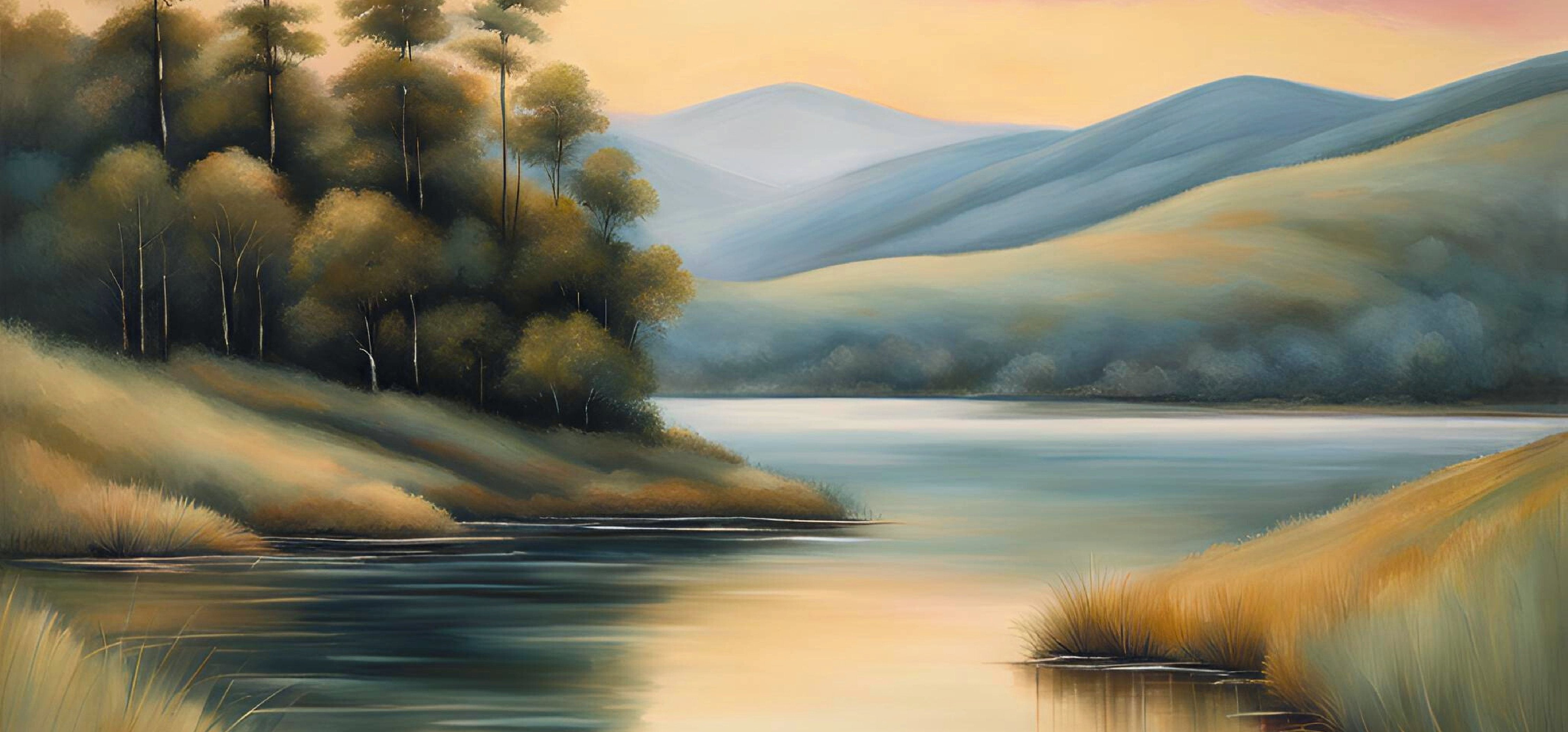
Jan 2025
The Romantic art style, which originated in the late 18th and early 19th centuries, celebrates the beauty of nature, the expressiveness of the individual, and the emotional highs and lows of the human experience. Even in an increasingly digital world where our lives and art increasingly take place online, the Romantic style remains relevant.
In this blog post, we take a look at why the Romantic art style also plays a significant role in the digital space and what elements it contributes to modern art forms.
1. ROMANCE AND EMOTIONS: THE KEY TO DIGITAL CONNECTION
Romanticism was a response to the Industrial Revolution and the rational thinking of the Enlightenment. It emphasized the individual, nature, and, above all, deep emotional expression. In today's digital era, where we are bombarded with information at an overwhelming pace, many of us yearn for an emotional connection—and the Romantic art style offers precisely that. Whether in digital artwork, photography, or design, the Romantic style appeals to its emotional and subjective elements. In art on digital platforms, these deep emotional expressions and moods can be conveyed just as effectively as in classical paintings.
2. THE BEAUTY OF NATURE IN THE DIGITAL AGE
A central theme of Romanticism was the veneration of nature and its overwhelming beauty. This fascination with nature has not diminished but continues today in digital art forms. Digital landscapes that reflect the experience of nature or the use of digital media to depict untouched wilderness are popular today. Nature themes have regained importance, especially in photography and illustration. Digital artists use technology to capture the majestic beauty of nature and depict it in a way that is both futuristic and nostalgic—a combination of the classic Romantic understanding of nature and the possibilities of modern digital media.
3. ROMANCE AS AN ESCAPE INTO ANOTHER WORLD
Romantic art was often an escape from the rapidly changing world of industrialization, a longing for an idealized past or a different, "purer" state of nature. This escape into an alternative reality remains relevant in digital art today. Many artists and designers draw on nostalgic, romantic themes to create digital worlds that transport us from the hectic present. Whether it's the gentle, pastel landscapes in digital paintings or the dreamy visualizations in video games, the Romantic art style manages to offer viewers a respite from everyday digital life and transport them to a world of fantasy and tranquility.
4. ROMANCE AND DIGITAL TECHNOLOGY: A SYMBIOSIS
Another interesting feature of Romanticism is the fact that it often fought against the Industrial Revolution and the increasing mechanization of the world. Today, in the digital age, we experience a similar tension between technology and the need for artistic expression. The Romantic art style has the ability to resolve this tension in creative ways. Digital artists today combine sophisticated technology with deeply emotional and nature-based themes. The use of 3D renderings, VR (virtual reality), and digital painting techniques makes it possible to take the Romantic style into a new dimension while still preserving the human longing for beauty, depth, and meaning.
5. ROMANTIC ART IN DIGITAL AESTHETICS
Digital aesthetics have evolved tremendously in recent years, and the Romantic art style has adapted to this development. Social media and digital platforms provide artists with a huge stage to showcase their work, and many use these platforms to share romantic, dreamy, and emotional art. Whether in the form of illustrations, digital paintings, or through the use of Romantic elements in web design and branding, digital aesthetics have a direct connection to Romanticism. The influence of Romanticism is also evident in the colors and shapes used to create a certain atmosphere. Pastel colors, soft transitions, and the depiction of dreams or idealizations continue to be among the preferred styles in digital art.
6. ROMANTICISM AS A TREND IN THE DIGITAL ART SCENE
The digital art scene is dynamic and constantly evolving. Nevertheless, a strong turn toward romantic and nostalgic themes is evident. The trend toward "slow art," toward works that evoke emotions and create a meditative atmosphere, demonstrates a return to Romantic principles of expression. Romanticism as an artistic movement not only holds its place in art history but is also kept alive in the modern digital art scene. Artists today use digital tools to achieve the same kind of emotional depth and subjectivity found in classic Romantic works .
Bring your digital art into reality!
Now that you've learned more about the fascinating possibilities of digital AI art, it's time to experience your favorite artwork in physical form. Explore our various printing options —whether on acrylic glass, photo paper, metal, etc.—and choose the perfect option to make your artwork shine.
Browse our product gallery , find the artwork that appeals to you most, and bring it to life in a high-quality print.
Do you still have questions? In our FAQ section, you'll find frequently asked questions and answers about AI art.
Discover, select and enjoy your art in the perfect form!
Conclusion
Romanticism has managed to establish itself as one of the most significant art movements in history. Its fascination with nature, the individual, and profound emotions has not only shaped classical art forms but also maintained its relevance in the digital space. Digital artists are using technology to transform the core ideas of Romanticism into new forms that are both nostalgic and innovative. In a world increasingly driven by technology and speed, the Romantic art style offers a valuable opportunity to find peace, create deeper emotional connections, and celebrate the beauty of the world.
